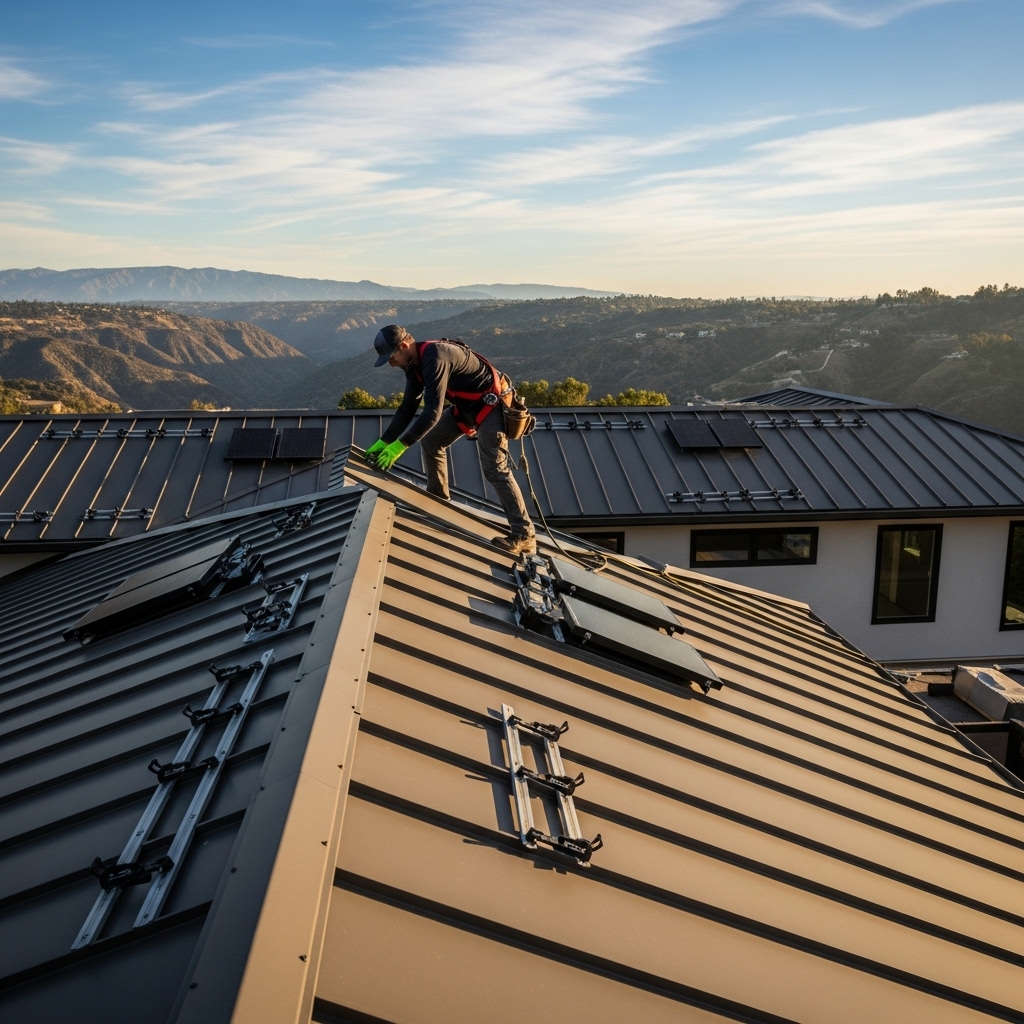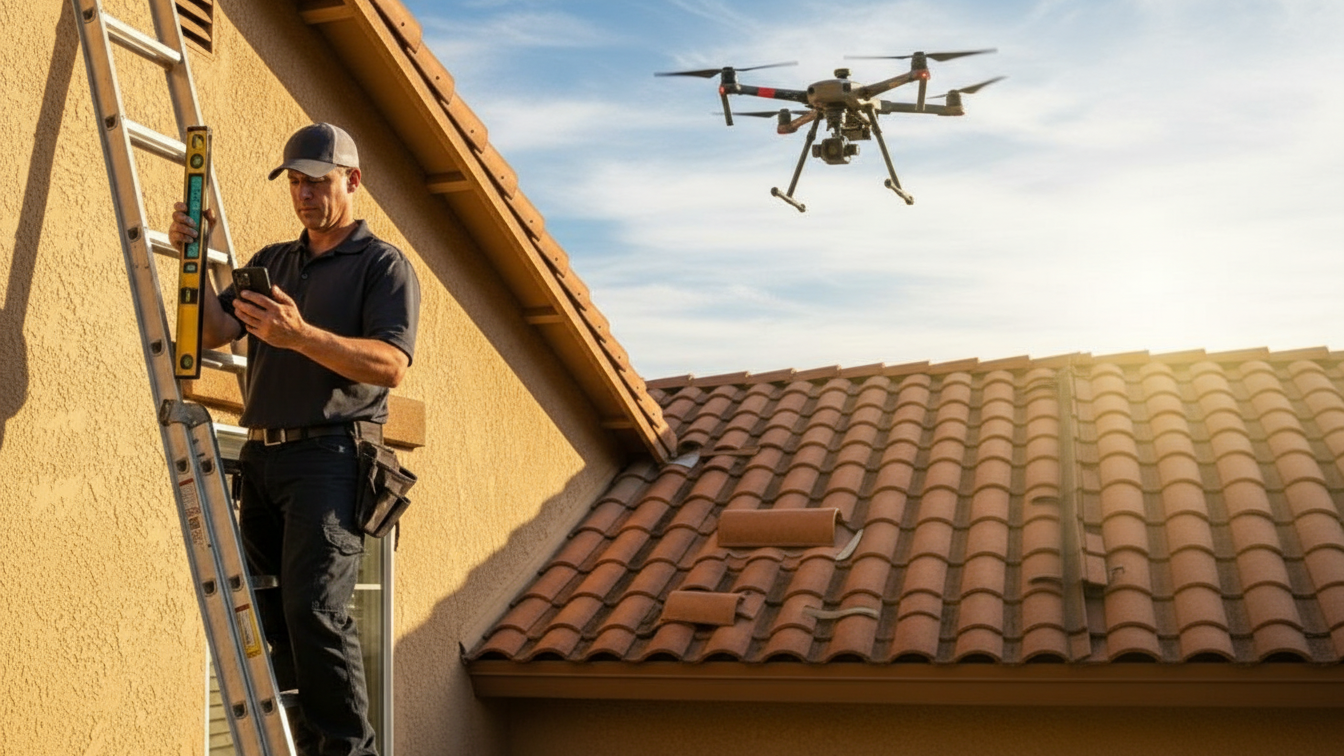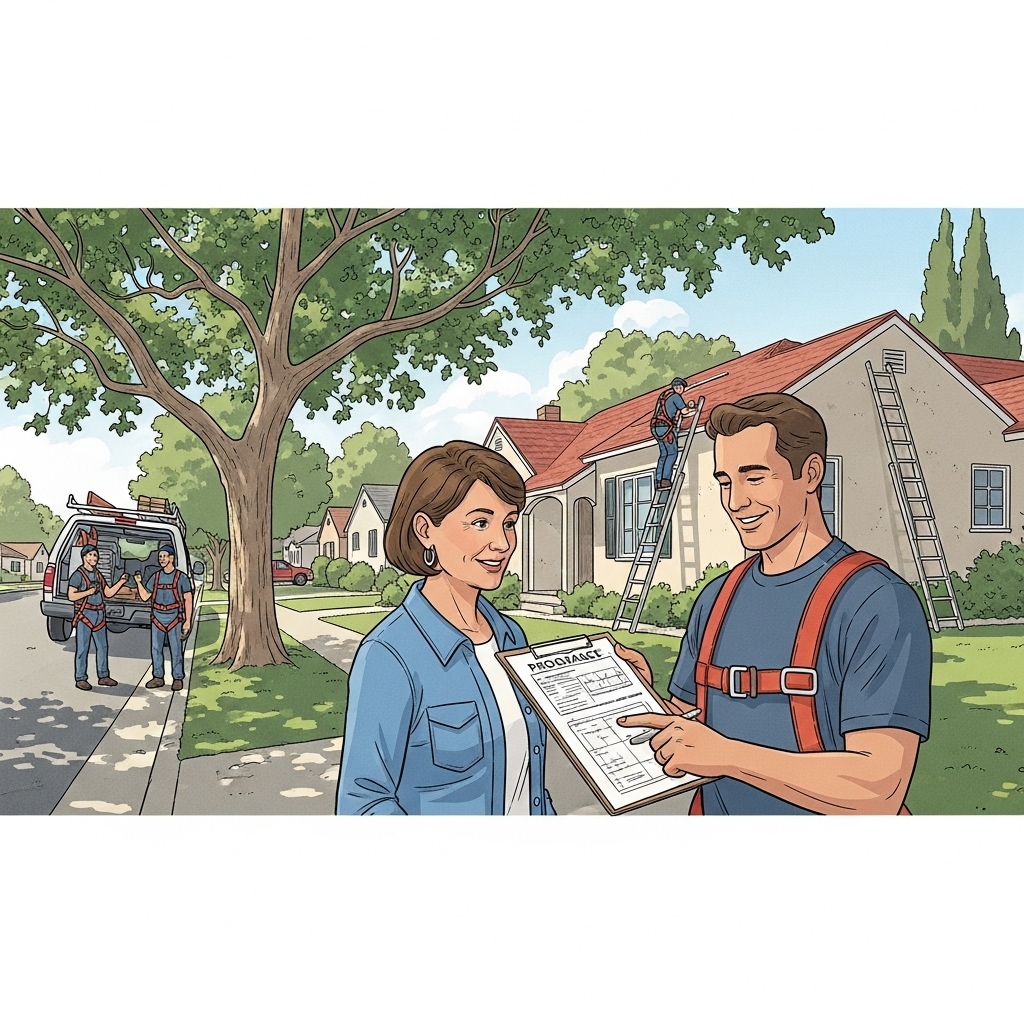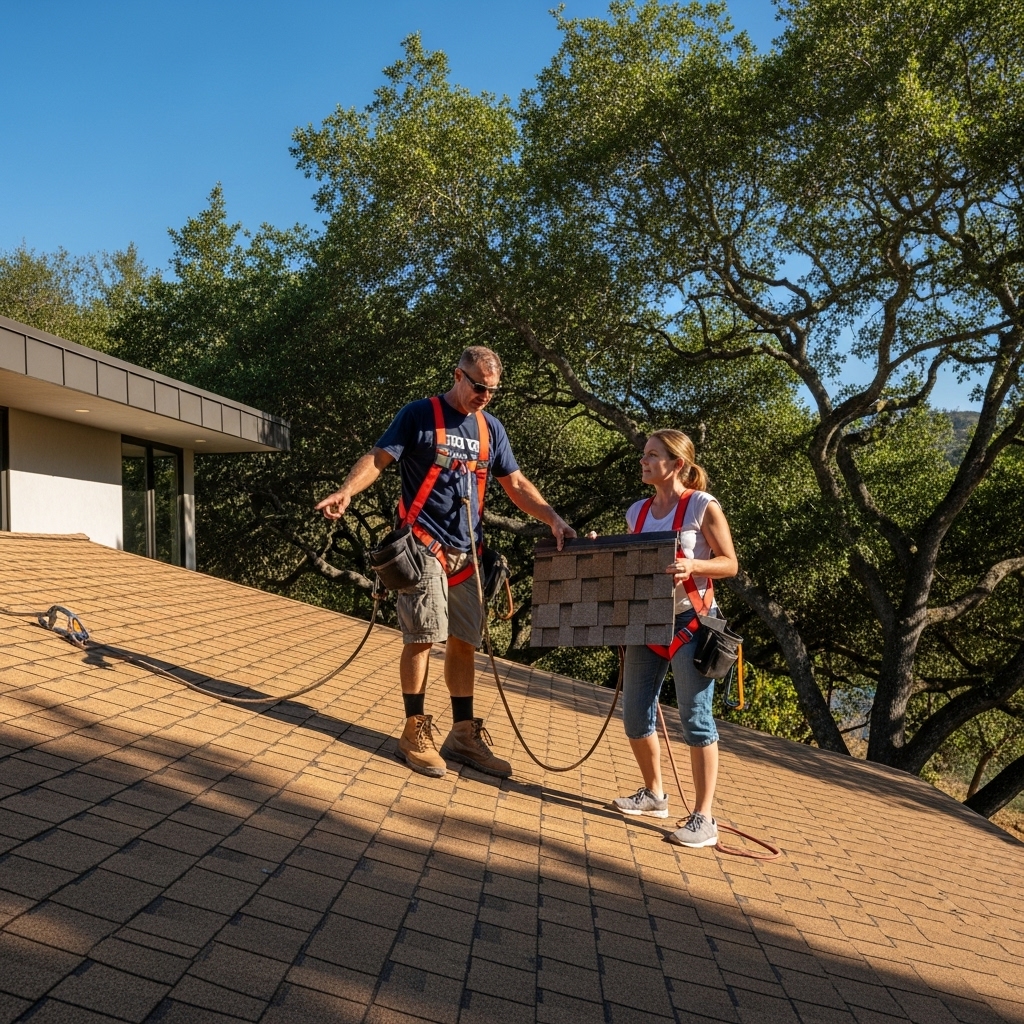When you live in Tarzana, your home gets a full taste of the San Fernando Valley’s personality—long, bright summers with heat that shimmers off Ventura Boulevard, cool evenings dropping down the canyon, and the occasional burst of Santa Ana winds that sweep dust and dry leaves across the yard. In this climate, homeowners quickly learn that comfort, efficiency, and resilience are not luxuries; they are the baseline for a home that performs well year after year. That’s where the advantages of installing metal roofing truly shine. Beyond the distinctive look, modern metal roofing systems are purpose-built to tame heat, protect against wind and embers, and work in harmony with energy-saving upgrades that are popular throughout Tarzana and the wider Valley.
As a local roofing professional, I’ve seen firsthand how a well-designed metal roof transforms the way a house feels and functions. On a hilltop with panoramic views or tucked into a shaded cul-de-sac near the 101, the right system can lower attic temperatures, stabilize indoor comfort, and help your HVAC breathe easier. The technology has evolved far from the old misconceptions of tinny barn roofs; today’s profiles and coatings are refined, durable, and tailored to California’s energy codes and wildfire realities. With the variety of styles available—standing seam, stone-coated steel with tile or shake profiles, and sleek low-profile panels—metal roofs complement everything from mid-century ranch homes to Spanish Revival facades common across Tarzana’s neighborhoods.
Efficiency Starts With the Tarzana Climate
To appreciate metal roofing’s benefits, start with what your home actually faces. Tarzana summers can nudge triple digits, and even the shoulder seasons carry generous sunshine. Roofs absorb and radiate all that heat, which can tax your insulation and HVAC if the roof system isn’t designed to reflect, vent, and release it. Metal excels because many products are engineered with reflective pigments and coated surfaces that bounce a significant portion of solar energy back into the sky. That means the roof surface heats less, the attic doesn’t become an oven, and the living space remains more stable without your air conditioner laboring as hard.
Cooler attic temperatures are not just about comfort; they influence the entire energy profile of your home. A reflective, properly ventilated metal roof pairs effectively with radiant barriers, continuous ridge and soffit ventilation, and balanced intake/exhaust pathways. Together, these elements create a pressure-balanced system that cycles hot air out, reduces heat transfer downward, and helps moisture escape before it causes mischief. Even on days when the Valley air feels still, stack effect air movement continues through a properly detailed roof and attic assembly, subtly improving efficiency.
Cool Roof Science You Can Feel
California’s Title 24 energy standards encourage cool roofing in climate zones like ours, and metal roofing is a natural fit. The “cool” in cool roofs comes from two properties: solar reflectance and thermal emittance. Reflectance reflects sunlight away, while emittance helps the material shed any heat it does absorb. Many metal panels and stone-coated metal shingles are engineered to score well on both counts, resulting in noticeably cooler roof temperatures in peak summer. The result is not theoretical—you can feel it under the eaves and in the rooms directly beneath the roof deck, where temperatures tend to stabilize and peak loads smooth out.
Additionally, the way metal roofing is often installed adds another layer of benefit. Many systems are mounted over battens or include integrated air space beneath the panels. That air space acts like a thermal break, hindering conductive heat flow into the structure. Combined with high-quality underlayment and thoughtful flashing, the assembly behaves almost like a shield, rejecting heat before it can push deeper into the home. In Tarzana, where heat spikes are a seasonal norm, this shield-like performance pays off daily in improved comfort.
Solar-Ready by Design
Tarzana homeowners are increasingly pairing roof upgrades with solar installations, and metal roofs are arguably the best platform for that investment. Standing seam panels, for example, allow solar racking to clamp directly onto the seams without penetrations through the roof surface. Fewer penetrations mean fewer potential leak points over time, a simpler installation, and a clean aesthetic that many clients prefer. Even stone-coated steel profiles can accommodate solar, provided the mounting hardware and flashing are matched properly to the system.
Because metal roofs often outlast multiple generations of rooftop equipment, you are less likely to face the frustrating scenario of replacing a worn-out roof before your solar panels reach the end of their service life. That alignment is a subtle but consequential form of efficiency—coordinating two major home systems so they age gracefully together. When the roof is designed with clear pathways for wiring, accessible attachment points, and protective flashing around every detail, the entire assembly becomes a cohesive, future-ready energy platform that suits Tarzana’s sunny lifestyle.
Durability That Matches Valley Realities
Efficiency also means avoiding disruptions. Tarzana’s Santa Ana winds and dry seasons can test any roof. Metal systems are engineered to lock together and resist uplift, shedding wind-driven debris and embers more effectively than many traditional materials. In hillside neighborhoods, gusts rush up slopes and over ridges; securely seamed metal panels and interlocking stone-coated steel shingles stay seated and tight, provided fasteners are specified and installed with precision.
Fire awareness is part of life here, and embers can travel astonishing distances. Metal roofing does not ignite, and when paired with ember-resistant venting, well-detailed eave edges, and non-combustible underlayment in vulnerable zones, it becomes a critical component of a home’s overall wildfire strategy. The lightweight nature of many metal systems is another local advantage. Compared to heavy concrete or clay tile, metal can reduce structural loads, which is beneficial in seismic events and useful for older homes that were not designed for extreme roof weights.
Acoustic Comfort Without Compromise
The old stereotype about metal roofs being loud in the rain fades quickly when you stand inside a home with a modern installation. Underlayment systems, attic insulation, and the roof deck all work together to dampen sound. Many Tarzana residents enjoy the sound of a rare Valley rainstorm; with a properly built system, the noise is usually no more pronounced than on other roof types. For homes near busy streets or commotion, adding a sound-dampening underlayment can create a perceptible calm inside, especially in upper-story rooms where roof noise would be most noticeable.
Design Flexibility That Complements Tarzana Style
Metal roofing does not force a one-size-fits-all look. If your home leans Spanish or Mediterranean, stone-coated steel in tile profiles mimics traditional barrel tile without the substantial weight. For mid-century or contemporary homes, standing seam panels in matte earth tones create a crisp, architectural edge that pairs beautifully with stucco, wood, and glass. Subtle colors reduce glare and integrate gracefully with the drought-tolerant landscaping common across Tarzana backyards. It is common to see homeowners fall in love with the design dimension—shadow lines at sunset, the fine seams tracing across low slopes, and the fitting harmony with modernized facades.
Customization extends beyond color and profile. Matching flashings, low-profile ridge vents, carefully detailed valley pans, and integrated gutters can make the roof read as an intentional design element rather than a mere necessity. If you are weighing options and looking for local guidance on profiles, coatings, and detailing that make the most sense for your block, it is worth talking with a contractor experienced in Tarzana-specific nuances of roof shape and exposure, especially if you are also exploring metal roofing services for accessory dwelling units or additions that share rooflines with the main home.
Installation Details That Matter in Tarzana
A high-performing metal roof is less about a single product and more about an integrated assembly. Underlayment should be selected for high-temperature performance because roof deck temperatures can soar on summer afternoons. Where eaves are exposed to sun and wind, reinforced membranes resist aging and remain pliable longer. In areas with complex geometry—chimneys, skylights, and intersecting roof planes—the flashing approach should be meticulous. Raised curbs, counter-flashings, and strategically positioned diverters cooperate to move water safely, even during rare heavy downpours.
Ventilation and intake deserve special attention in Valley homes with complex attic layouts. Continuous ridge vents, baffles that prevent insulation from blocking soffits, and clear airflow paths all support the heat-rejecting power of the metal roof. If your home has vaulted ceilings, unvented assemblies with proper insulation above the deck can be designed to work with metal panels, provided the build-up includes an appropriate thermal break and vapor control layer. This attention to detail ensures the roof performs consistently across seasons, not just during summer heat.
Real-World Scenarios in Local Neighborhoods
On streets where older shake roofs once dominated, many homeowners have transitioned to stone-coated steel shakes to retain a textured, classic look without the fire risk. In ridge-top homes with expansive views over the Valley, standing seam systems provide wind resistance and a clean aesthetic that photographs beautifully at dusk. Along quieter cul-de-sacs near Ventura Boulevard, Spanish-inspired facades have adopted metal tile profiles to achieve the familiar barrel silhouette while lightening roof loads and simplifying maintenance. Accessory structures—studios, garages, and ADUs—are also ideal candidates for metal roofs, especially when owners plan to install battery-backed solar and want the roof to be penetrations-smart and future-proof.
In hillside properties where drainage is a concern, metal’s smooth surfaces and well-channeled valleys show their worth. Leaves and debris glide off more readily, and with properly screened gutters, seasonal maintenance becomes straightforward. When winter rains arrive, the system’s seams and flashings control water with precision, preventing the subtle leaks that tend to plague older, pieced-together assemblies.
Maintenance Is Simple, Strategic, and Seasonal
One of the most appealing benefits of metal roofing for efficiency-minded homeowners is how predictable the maintenance routine can be. Seasonal rinsing to remove dust and ash, periodic checks of gutters and downspouts, and quick visual inspections after wind events generally suffice. Fastener checks—where applicable—are typically straightforward, and many standing seam systems minimize exposed fasteners altogether. If your property has overhanging trees, trimming back branches that drop leaves or rub against the roof surface keeps airflow and drainage pathways clear.
When integrated with solar, coordination matters. Establish a simple schedule so the roof and solar arrays are inspected together, especially after a major wind event. Maintaining the flashing integrity around roof penetrations, verifying that clamps remain tight on standing seams, and ensuring wire management is tidy are small tasks that prevent small issues from becoming bigger ones. The result is a roof that quietly continues to do its job, conserving energy and protecting the home with little fuss.
Myths and Misconceptions, Debunked
Many Tarzana homeowners start with understandable questions. Will a metal roof make my house hotter? In practice, the opposite tends to occur because of the reflectivity and ventilation characteristics discussed earlier. Is it too noisy? Modern assemblies are pleasantly quiet. Will it rust? Quality systems use corrosion-resistant metals and coatings designed for dry, sunny climates like ours. Can it handle complex rooflines? With skilled detailing, metal is one of the most adaptable materials for hips, valleys, and transitions. Over time, the benefits are not only about storm hardiness; they are about daily comfort and a home that simply feels better through the longest sunny stretches.
FAQ
How long does a metal roof typically last in Tarzana? A well-installed metal roof can last for decades, and in our dry climate, coatings and finishes tend to age gracefully when basic care is observed. The key is selecting products suited to high-heat exposure and ensuring the assembly includes the right underlayment and ventilation details.
Will a metal roof help lower indoor temperatures in summer? Yes. Reflective pigments and high-emittance coatings, combined with vented assemblies or thermal breaks, keep the roof surface and attic cooler, which reduces heat transfer into the living space and eases the load on your air conditioning.
Can metal roofing match the Spanish tile look common in Tarzana? Absolutely. Stone-coated steel in tile profiles delivers the familiar barrel-tile silhouette with far less weight. With careful color selection and detailed flashings, the finished roof harmonizes with stucco and Mediterranean-style exteriors.
Is metal roofing compatible with solar panels? Metal roofs are arguably the best platform for solar, especially standing seam systems that allow clamp-on racking without penetrating the roof surface. This reduces potential leak points and keeps the assembly cleaner and easier to service over time.
Will my roof be noisy during rain? With modern underlayment, insulation, and a solid deck, the sound of rain is typically comparable to other roof types. Many homeowners find the ambient sound to be pleasantly subdued rather than loud.
How does metal roofing perform in wind and wildfire conditions? Interlocking panels and secure seams resist uplift, while non-combustible materials help guard against wind-blown embers. Pairing the roof with ember-resistant vents and smart edge details creates a comprehensive protective approach for Valley conditions.
What maintenance should I plan for? Seasonal rinsing, gutter cleaning, and quick checks after wind events are usually sufficient. If your system uses exposed fasteners, periodic torque checks may be recommended. Coordinate inspections with any rooftop solar to ensure penetrations and clamps remain secure.
Does metal get too hot to walk on for maintenance? The surface can heat up on summer afternoons, so timing and safety matter. Early morning or evening inspections are best, and most maintenance can be done from ladders or with safety lines, often by professionals who know how to navigate the system without damaging panels.
Can metal roofing be installed over an existing roof? In some cases, yes, depending on the existing materials, condition, and local code. A professional evaluation determines whether an overlay is appropriate or if a tear-off better supports long-term performance and ventilation goals.
Will a metal roof change my home’s curb appeal? It often enhances it. With the right profile, color, and trim details, metal can either echo traditional styles or express a modern, tailored look that complements Tarzana’s eclectic streetscapes.
If you are weighing the next step for your Tarzana home, there is real value in seeing and touching sample panels, walking through ventilation strategies, and mapping a plan that pairs aesthetics with performance. When you are ready to take that step, schedule a conversation about metal roof installation tailored to your neighborhood, roof shape, and long-term goals, and enjoy a cooler, quieter, and more resilient home season after season.






